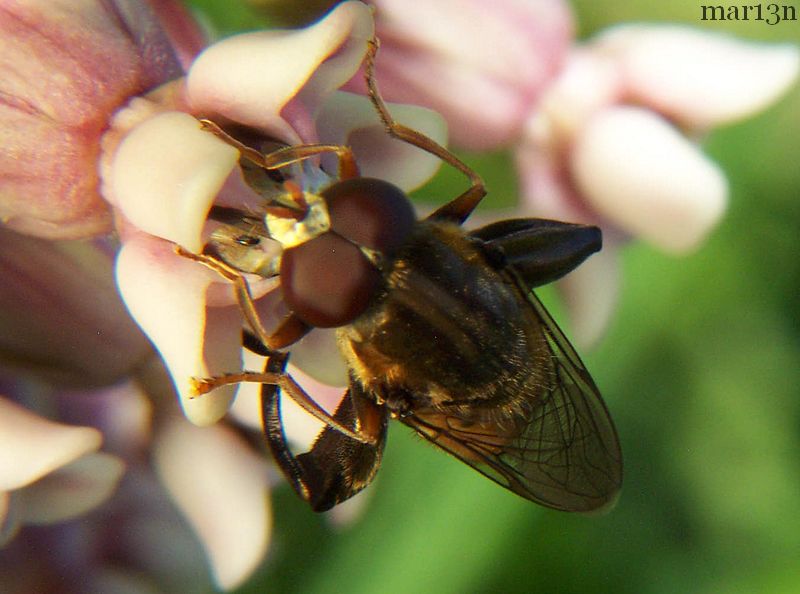Syrphid Fly – Tropidia quadrata

Adult hover flies require nectar or honeydew and pollen to ensure their reproduction (as well as to power their physical activities), and larvae generally require aphids for breakfast, lunch and dinner to complete their development. However, in the absence of aphids, larvae of some species can subsist and develop entirely on diets of pollen [1].

Syrphid flies are routinely used as a biological control in the lettuce fields of California’s vegetable-producing regions, where the fly’s larvae are generally effective in controlling lettuce aphid (Nasonovia ribisnigri). It is primarily the Syrphidae that enable organic romaine growers on California’s central coast to produce harvestable crops.
Syrphidae larvae are, in turn, parasitized by wasps in the Hymenoptera families Ichneumonidae and Pteromalidae [1].
References
- University of California, DANR, “Biological Control Agents for Aphids in Vegetable Crops“

